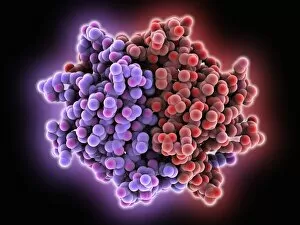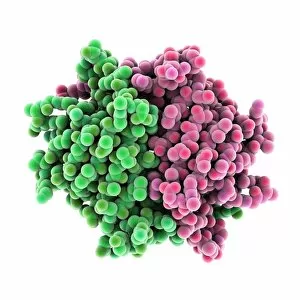Research Applications Collection
"Unlocking the Potential of Streptavidin-Biotin Molecular Complex in Research Applications" The world is constantly evolving
All Professionally Made to Order for Quick Shipping
"Unlocking the Potential of Streptavidin-Biotin Molecular Complex in Research Applications" The world is constantly evolving, and one area that has garnered significant attention is the utilization of the Streptavidin-biotin molecular complex. This intricate interaction between Streptavidin bacterial protein C015/8458 and biotin holds immense promise for various scientific endeavors. Researchers have long recognized the exceptional binding affinity exhibited by this complex, making it an invaluable tool in numerous fields. From biochemistry to molecular biology, its versatility knows no bounds. The precise recognition capabilities of Streptavidin-biotin complexes enable scientists to study a wide range of biological phenomena with unparalleled accuracy. In genetic engineering, these complexes play a crucial role as they facilitate DNA manipulation techniques such as PCR amplification and gene cloning. By harnessing their binding properties, researchers can precisely target specific regions within DNA sequences, allowing for more efficient experimentation and analysis. Moreover, this molecular duo finds extensive use in diagnostic assays. Their ability to bind with high specificity enables the development of sensitive tests for detecting diseases or pathogens. Whether it's identifying viral infections or measuring biomarkers indicative of certain conditions, researchers rely on Streptavidin-biotin complexes to enhance diagnostic accuracy. Furthermore, advancements in drug delivery systems owe much credit to these remarkable complexes. Researchers are exploring ways to exploit their binding abilities for targeted drug delivery directly at disease sites within the body. This approach minimizes side effects while maximizing therapeutic efficacy – a breakthrough that could revolutionize medical treatments. Beyond biomedical applications, scientists are also investigating novel uses for Streptavidin-biotin complexes in nanotechnology and materials science. These tiny yet mighty interactions hold potential for constructing intricate nanostructures or creating self-assembling materials with tailored properties. As research continues to push boundaries across disciplines, it is clear that understanding and harnessing the power of Streptavidin-biotin molecular complexes is paramount.



